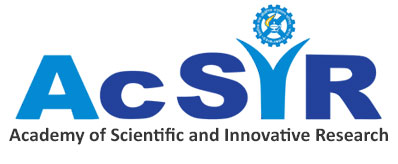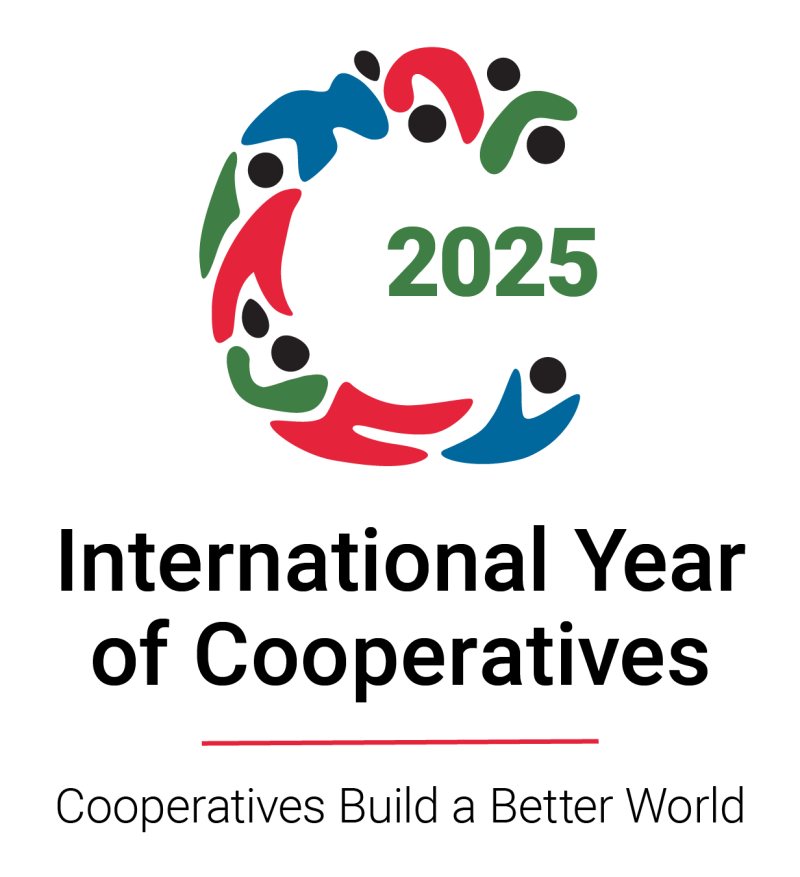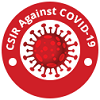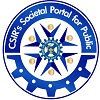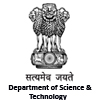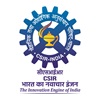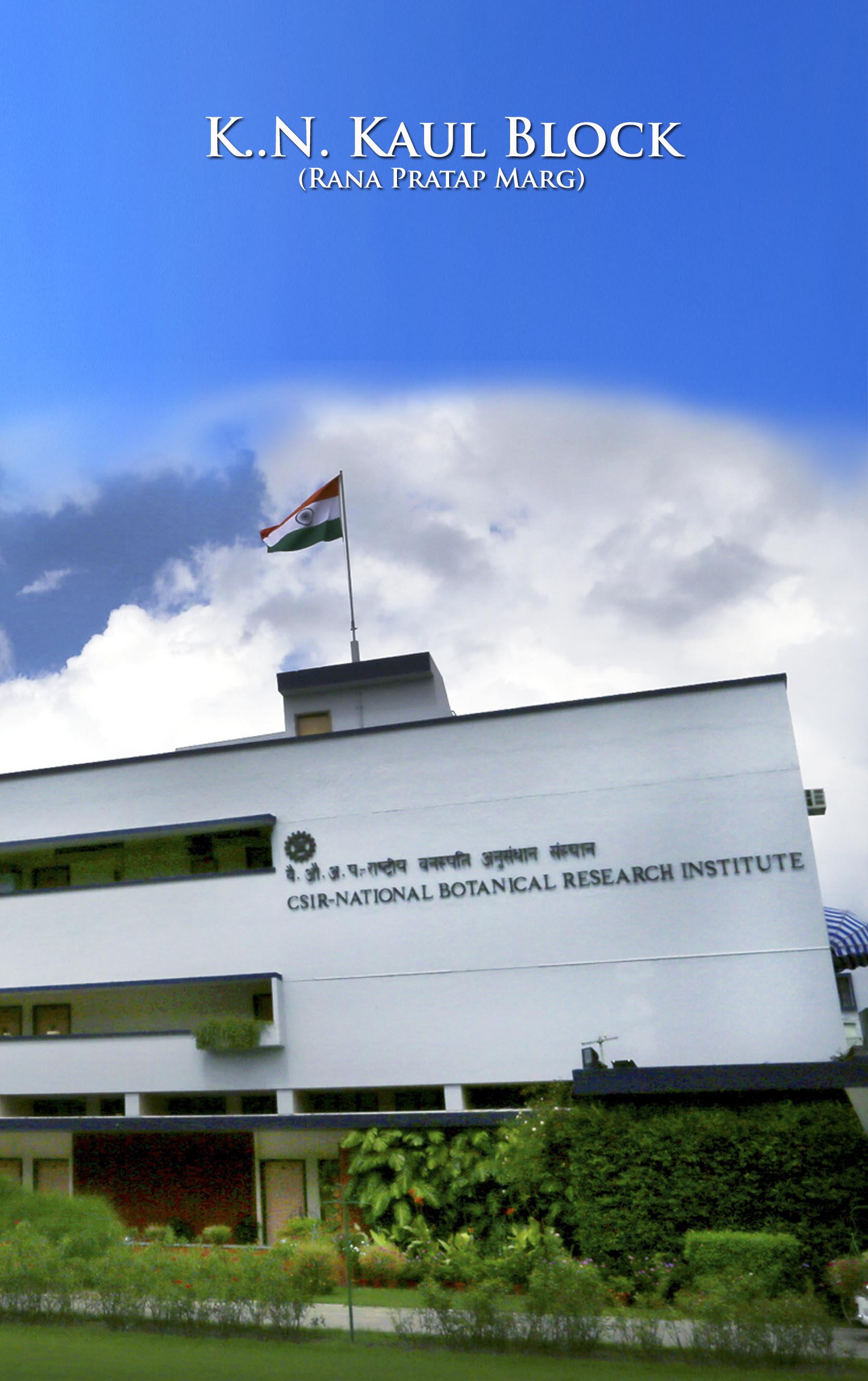

Dr. Pankaj Kumar Srivastava
Senior Principal Scientist
Research Interests
Environmental Technologies Division is working in the following R&D areas:
1. Environmental Monitoring & Assessment
2. Environmental Auditing & Environmental Impact Assessment
3. Pollution Remediation using Plants & Microbes
4. Mycoremediation of Arsenic in the soil-crop continuum
5. Soil Pollution Monitors
6. Soil Reclamation
7. Waste Management & Utilization
8. ENVIS Resource Partner to MoEF&CC, GoI on “Plants & Pollution”
Dr. Pankaj Kumar Srivastava
Senior Principal Scientist
Research Summary
v Comprehensive Monitoring and Assessment of Arsenic Pollution in the 20 Arsenic Prone Districts of Uttar Pradesh
v Assessment of Arsenic Pollution & Bioremediation of Arsenic Contamination from Agricultural Soils
The monitoring and assessment of arsenic pollution in five districts of Uttar Pradesh and three districts of West Bengal were performed using soil (3 – 35 mg As kg-1), irrigation groundwater (0 – 312 µg As L-1) and crop samples (4 – 16 mg As kg-1 in the roots and 0.179 – 0.932 mg As kg-1 in the grains). Over 200 rice germplasm of West Bengal and Uttar Pradesh were assessed for arsenic tolerance, and screened categorically into arsenic sensitive, moderately tolerant and arsenic tolerant paddy varieties.
A total of 69 fungal strains isolated from arsenic contaminated paddy soils collected from West Bengal and Uttar Pradesh and identified according to their phenotypic, microscopic and molecular (ITS) level characterization. During arsenic tolerance experiments, all the 69 soil fungal strains cultivated in medium supplemented with 10, 100, 1000, 5000 and 10,000 ppm of arsenate. Their radial growth was determined and compared to the control (without arsenate). Amongst dominant (frequently encountered) soil fungal isolates; Trichoderma spp., Aspergillus spp. survived upto 10000 ppm of arsenate. Strains belong to Rhizopus, Westerdykella, Lasiodiplodia, Microdochium, Chaetomium, Myrothecium, Stachybotrys, Rhizomucor, Fusarium showed tolerance upto 10000 ppm of arsenate. Arsenic removal efficacy of 25 fungal strains, who were found tolerant to 5000 ppm of arsenate, was assayed under laboratory conditions for 21 days. All these 25 fungal strains cultivated individually on mycological broth initially enriched with 10 mg L-1 of arsenic. Fungal biomass of these strains removed arsenic biologically from the medium which were ranged from 10.92 to 65.81% depending on fungal species. The flux of biovolatilized arsenic was determined directly by estimating the arsenic content in a silver nitrate impregnated filter paper gauge. The mean percent removal as flux of biovolatilized arsenic ranged from 3.71 t o 29.86%. Most effective removal of arsenic was done by the fungal strains Trichoderma sp., Westerdykella sp., Lasiodiplodia sp., and Rhizopus sp., Aspergillus oryzae, Chaetomium sp., Arthroderma benhamiae, Trichophyton verrucosum, Aspergillus nidulans, Rhizomucor variabilis, Emericella sp. and Fusarium sp. The NCBI Genbank accession numbers of these strains have been obtained and their cultures have been deposited at the MTCC and the NFCCI, India. Novel arsenite methyltransferase (arsM) genes were cloned and characterized in some novel and native arsenic-tolerant soil fungi (partial arsM genes from Aspergillus niger FNBR_FA-12 (NCBI gb# arsM partial: KJ682649), Westerdykella aurantiaca FNBR_FA-03 (NCBI gb#arsM partial: KJ682647), Trichoderma longibrachiatum FNBR_FA6 (NCBI gb# arsM partial: KJ682648), Lasiodiplodia sp. FNBR_FA13 (NCBI gb# arsM partial: KJ682650). A full length arsM gene (876 bp) from Westerdykella aurantiaca (NCBI gb# JN118571) was reported as first arsM gene of eukaryotic origin. Lead soil fungal strains were tested for their plant growth promoting abilities and they were not exhibiting any pathogenic symptoms on the test crops. These fungal strains were proposed for their effective use for the arsenic bioremediation in arsenic-contaminated agricultural soils.
v Development of Bioaugmentation based safe cultivation practice for remediating Arsenic Contamination to Paddy Crop
Leads of the previous project were undertaken further (1) to develop the best suitable consortia formulation of novel arsenic remediator indigenous soil fungal strains for their soil applications and field trials, and (2) to conduct multi-locational “in-situ‟ trials at the high arsenic contaminated sites in West Bengal using the developed fungal consortia formulation integrated with the ongoing cultivation practice of paddy varieties (arsenic sensitive/moderately tolerant) to demonstrate low/no arsenic accumulation in their grains and reduction in the bioavailable soil arsenic fraction.
Detailed surveys were made to arsenic prone sites in five districts of West Bengal. Three villages were identified where the soil arsenic contents are on higher side above threshold. Selection of paddy fields was made in three selected villages to conduct multilocation trials, and a local agency was identified for facilitating logistic support at local level with progressive farmers. Consortia formulations on talc and charcoal were prepared. Parameters viz., viability, compatibility assays were also done. Soil fungal formulations were tested for their role in restricting arsenic uptake into rice phytomass during boro- and aman- seasons in the year 2017 and 2018. Based upon four consecutive paddy cropping seasons of the year 2017 and 2018, a highly efficient soil fungal arsenic remediating biofertilizer formulation has been developed and demonstrated at field level. Biofertilizer companies and Agriculture Department of West Bengal have been contacted to transfer/ popularize the technology among farmers.
v Remediation and Reclamation of Hexachlorocyclohexane (HCH) Dumpsite by using Microbial Bioremediation Technology based on (1) Screening of Plants for HCH Phytoremediation, and (2) Microbial-assisted Phytoremediation at a HCH Dumpsite of Northern India.
v ENVIS – Resource Partner on “Plants & Pollution” at CSIR – NBRI
The Economic Division of MoEF&CC, GoI implements the Environmental Information System (ENVIS) Scheme. The ENVIS serves as a single-stop web-enabled repository of comprehensive environmental information with collection, collation, storage, retrieval and dissemination of the same through a nationwide network of ENVIS Hubs (hosted by the Environment/ Forest Department of State Governments/ UT Administrations) and ENVIS Resource Partners (RPs) (hosted by environment related governmental and non-governmental organizations/institutes of professional excellence).
ENVIS – RP – NBRI works (1). to promote, implement and coordinate Green Skill Development Programme (GSDP), an initiative to skill youth in environment, forest and wildlife sectors and enabling them to be gainfully employed or self-employed, (2). to implement and coordinate National Environment Survey (NES) – a Grid-based Resource Information and Decision Support System (GRIDSS) for sustainable management of natural resources. The survey would be conducted at the district level to fill in data gaps in respect of various environmental parameters such as emission inventory and pollution; forest and wildlife (flora and fauna); wetlands; rivers and other water bodies; public health etc., (3).to implement and coordinate Community-driven Environmentally Sustainable Village Programme (CESVP) with the objective of mobilizing communities on environmental issues, creating decentralized models of development to empower local communities and build an awareness driven atmosphere in villages to adopt environmentally sustainable practices at community level, and (4). to build a repository and dissemination centre in Environmental Science, Information and Management (ESIM) thourgh website of ENVIS-RP-NBRI (http://www.nbrienvis.nic.in/).
v Green Skill Development Programmes on (i) Pollution Monitoring – Soil Pollution & (ii) Greenbelt Development for Industries sponsored by MoEF&CC as per the guidelines of NSQF of NSDC, GoI which are being undertaken for teachers, students, researchers, stakeholders, entrepreneurs etc. Both the courses are of 200 hours.
Dr. Pankaj Kumar Srivastava
Senior Principal Scientist
Publications
i. Kaur, J., Anand, V., Srivastava, S., Bist, V., Tripathi, P., Naseem, M., Nand, S., Anshu, Khare, P., Srivastava, P.K., Bisht, S., Srivastava, S. 2020. Yeast strain Debaryomyces hansenii for amelioration of arsenic stress in rice. Ecotoxicology and Environmental Safety 195: 110480 https://doi.org/10.1016/ j.ecoenv. 2020.110480
ii. Tripathi, P., Khare, P., Barnawal, D., Shanker, K., Srivastava, P.K., Tripathi, R.D., Kalra, A. 2020. Bioremediation of arsenic by soil methylating fungi: Role of Humicola sp. strain 2WS1 in amelioration of arsenic phytotoxicity in Bacopa monnieri L, Science of The Total Environment, https://doi.org/10.1016/ j.scitotenv.2020.136758.
iii. Singh, S.B., Srivastava, P.K. 2020. Bioavailability of arsenic in agricultural soils under the influence of different soil properties. Springer Nature Applied Sciences 2: 153. https://doi.org/10.1007/s42452-019-1932-z
iv. Singh, M., Srivastava, P.K., Yadav, H.K., Kharwar, R.N. 2019. Phylogenetic Assessment of Trichoderma (fungi) isolates from Arsenic Contaminated Soils. International Journal of Research and Analytical Reviews, 6: 102-116.
v. Kumari, B., Singh, M., Srivastava, P.K., Singh, S.N. 2019. Degradation of Petroleum Sludge in Soil by Bacterial-Fungal Co-Culture in Presence of Organic and Inorganic Stimulants. International Journal of Plant and Environment, 5: 155-164.
vi. Jaiswal, V., Saxena, S., Kaur, I., Dubey, P., Nand, S., Naseem, M., Singh, SB., Srivastava, P.K., Barik, SK. 2018. Application of four novel fungal strains to remove arsenic from contaminated water in batch and column modes. Journal of Hazardous Materials, 356: 98-107.
vii. Singh, M., P.K. Srivastava, R.N. Kharwar. 2018. Role of rhizospheric mycobiota in remediation of arsenic metalloid. In: Chandra R., Dubey, NK., Kumar V. (eds.) “Phytoremediation of environmental pollutants”, CRC Press Baton Roca, pp. 137-158.
viii. Shukla, A.K., P.K. Srivastava, B. Singh, S. K. Behera, T. Thomas. 2017. Litterfall patterns and soil nutrient chemistry in varied tropical deciduous forests. International Journal of Chemical Studies, 5: 1203-1210.
ix. Singh, M., P.K. Srivastava, V.K. Jaiswal, R.N. Kharwar. 2017. Biotechnological Applications of Microbes for the Remediation of Environmental Pollution. In: Singh, R., Trivedi, M. (eds.) “Biotechnology: Trends and Applications”, Studium Press LLC, USA, pp. 179-214.
x. Srivastava, P.K., Gupta, M., Shikha, Singh, N., Tewari, S.K., 2016. Amelioration of sodic soil for wheat cultivation using bioaugmented organic soil amendment. Land Degradation & Development, 27: 1245–1254.
xi. Srivastava, P.K. 2016. Fungal bioaugmentation of the rice root-zone to reduce arsenic uptake by rice from soils. In: Arsenic Research and Global Sustainability: Proceedings of the Sixth International Congress on Arsenic in the Environment (As2016), Stockholm, Sweden, CRC Press, pp. 329-330.
xii. Gupta, M., Srivastava, P.K., Shikha, Niranjan, A., Tewari, SK. 2016. Use of a bioaugmented organic soil amendment in combination with gypsum for Withania somnifera growth on sodic soil. Pedosphere, 26:299-309.
xiii. Verma, S., Verma, P.K., Meher, A.K., Dwivedi, S., Bansiwal, A.K., Pande, V., Srivastava, P.K., Verma, P.C., Tripathi, R.D., Chakraborthy, D. 2016. A novel arsenic methyltransferase gene of Westerdykella aurantiaca isolated from arsenic contaminated soil: phylogenetic, physiological, biochemical studies and its role in arsenic bioremediation. Metallomics, 8: 344-53.
xiv. Misra, A., Srivastava, S., Srivastava, P.K., Shukla, P., Agrawal, P.K., Rawat, A.K.S. 2016. Chemotaxonomic variation in forskolin content and its correlation with ecogeographical factors in natural habitat of Coleus forskohlii Briq. collected from Vidarbha (Maharashtra, India). Industrial Crops and Products, 84:50-58.
xv. Singh, M., Srivastava P.K., Verma, P.C., Kharwar, R. N., Singh, N., Tripathi, R.D. 2015. Soil fungi for mycoremediation of arsenic pollution in agriculture soils. Journal of Applied Microbiology, 119: 1278–1290.
xvi. Gupta, M., Srivastava, P.K., Singh, S.B., Singh, N., Tewari, S.K. 2015. Organic Amendments with Plant Growth Promoting Fungi Support Paddy Cultivation in Sodic Soil. Communications in Soil Science and Plant Analysis, 46: 2332-2341.
xvii. Srivastava, P. K., M. Singh, M. Gupta, N. Singh, R.N. Kharwar, R. D. Tripathi, C.S. Nautiyal. 2015. Mapping of arsenic pollution with reference to paddy cultivation in the middle Indo-Gangetic Plains. Environmental Monitoring and Assessment, 187:1–14. Doi.org/10.1007/s10661-015-4418-5.
xviii. Raj, A., Jamil, S., Srivastava, P.K., Tripathi, R.D., Sharma, Y.K., Singh N., 2014. Feasibility study of Phragmites karka and Christella dentata grown in West Bengal as As accumulator. International Journal of Phytoremediation, 17: 869-878.
xix. Singh, N., Srivastava, P.K., Tripathi, R.D., Srivastava, S., Vaish, A., 2015. Microbial in-situ mitigation of arsenic contamination in plants and soils. In: Bundschuh, J., Holländer, H., Ma, L.Q. (eds.) “In-Situ Remediation of Arsenic-Contaminated Sites”, CRC Press, pp. 115-143.
xx. Srivastava, P.K., Gupta, M., Pandey, A., Pandey, V., Singh, N., Tewari, S.K., 2014. Effects of sodicity induced changes in soil physical properties on paddy root growth. Plant, Soil and Environment, 60:165–169.
xxi. Gupta, M., Srivastava, P.K., Tewari, S.K. 2014. Prospects of sodic soil amelioration for increased crop production in India. Advances in Bioresearch, 5: 160-162.
xxii. Gupta, M., Shikha, Srivastava, P.K., Tewari, S.K. 2014. Quality evaluation of vermicompost at various phases of farm waste composting and during storage. Advances in Bioresearch, 5: 65-72.
xxiii. Srivastava, P. K., Singh, M., Singh, N., Tripathi, R. D., 2013. Soil Arsenic Pollution: A Threat to Crops. Journal of Bioremediation and Biodegradation; 4: e137.
xxiv. Srivastava, P. K., Shenoy, B.D., Gupta, M., Vaish, A., Mannan, S., Singh, N., Tewari, S.K., Tripathi, R. D., 2012. Stimulatory effects of arsenic-tolerant soil fungi on plant growth promotion and soil properties. Microbes and Environments, 27: 477–482.
xxv. Srivastava, P. K., Gupta, M., Upadhyay, RK, Sharma, S., Shikha, Singh, N., Tewari, S. K., Singh, B., 2012. Effects of combined application of vermicompost and mineral fertilizer on the growth of Allium cepa L. and soil fertility. Journal of Plant Nutrition and Soil Science, 175: 101–107.
xxvi. Tripathi, P., Dwivedi, S., Mishra, A., Kumar, A., Dave, R., Srivastava, S., Shukla, M. K., Srivastava, P. K., Chakrabarty, D., Trivedi, P. K., Tripathi, R. D., 2012. Arsenic Accumulation in Native Plants of West Bengal, India: Prospects for Phytoremediation but Concerns with the use of Medicinal Plants. Environmental Monitoring and Assessment, 184: 2617-2631.
xxvii. Raj, A., Pandey, A. K., Sharma, Y. K., Khare, P. B., Srivastava, P. K., Singh, N., 2011. Metabolic adaptation of Pteris vittata L. gametophyte to arsenic induced oxidative stress. Bioresource Technology, 102: 9827–9832.
xxviii. Srivastava, P.K., Vaish, A., Dwivedi, S., Chakrabarty, D., Singh, N., Tripathi, R.D. 2011. Biological removal of arsenic pollution by soil fungi. Science of the Total Environment, 409: 2430-2442.
xxix. Srivastava, P. K., Singh, P. C., Gupta, M., Sinha, A., Vaish, A., Shukla, A., Singh, N., Tewari, S. K., 2011. Influence of earthworm culture on fertilization potential and biological activities of vermicomposts prepared from different plant wastes. Journal of Plant Nutrition and Soil Science, 174: 420–429.
xxx. Srivastava, P. K., Baleshwar, Behera, S. K., Singh, N., Tripathi, R. S., 2011. Long-term changes in the floristic composition and soil characteristics of reclaimed sodic land during eco-restoration. Journal of Plant Nutrition and Soil Science, 174: 93-102.
xxxi. Sinha, A., Srivastava, P. K., Singh, N., Sharma, P.N., Behl, H.M. 2011. Optimizing organic and mineral amendments to jatropha seed cake to increase its agronomic utility as organic fertilizer. Archives of Agronomy and Soil Science, 57: 193-222.
xxxii. Rai, A., Kulshreshtha, K., Srivastava, P. K., Mohanty, C. S., 2010. Leaf surface structure alterations due to particulate pollution in some common plants. Environmentalist 30:18–23.
xxxiii. Srivastava, P.K., Kulshreshtha, K., Mohanty, C.S., Pushpangadan, P., Singh, A. 2005. Stakeholder-based SWOT analysis for successful municipal solid waste management in Lucknow, India. Waste Management, 25: 531-537.
xxxiv. Srivastava, P.K., Rai, U.N., Gupta, D.K., Jha, V. 2002. Detoxification of Environmental Pollutants by Biological Organisms. In: Tripathi, G. (ed.) “Bioresource Technology”, CBS Publishers, India, pp. 161-169.
xxxv. Srivastava, P.K., Neraliya, S., Pandey, G.C. 2000. Bioaccumulation of metals from distillery effluent by some aquatic macrophytes. Proc. Nat. Acad. Sci. India, Sec. B (Biological Sciences), 70 (III & IV): 311-317.
xxxvi. Srivastava, P.K., Pandey, G.C. 1999. Paper mill effluent induced toxicity in Eichhornia crassipes and Spirodela polyrrhiza. Journal of Environmental Biology, 20: 317-320.
xxxvii. Srivastava, P.K., Pandey, G.C. 1999. Effect of fertilizer effluent on total chlorophyll content and biomass of some aquatic macrophytes. Journal of Ecotoxicology and Environmental Monitoring, 11: 123-127.
xxxviii. Srivastava, P.K., Pandey, G.C. 1998. Bioremediation of distillery effluent using selected aquatic plants. Research Journal of Chemistry and Environment, 2: 43-45.
Dr. Pankaj Kumar Srivastava
Senior Principal Scientist
Patents
Dr. Pankaj Kumar Srivastava
Senior Principal Scientist
Scholars
|
1. |
Dr. Neha Jaiswal |
Project Scientist-I |
|
2. |
Dr. Sneh Lata |
Project Scientist-I |
|
3. |
Dr. Durga Prasad |
Project Scientist-I |
|
4. |
Mr. Prem Prakash Singh |
Project Assistant-III |
|
5. |
Ms. Anita Gupta |
Project Assistant-III |
|
6. |
Ms. Jasvinder Kaur |
Project Assistant-II |
|
7. |
Mrs. Anshu Gautam |
Project Assistant-II |
|
8. |
Ms. Soni Chauhan |
Project Assistant-II |
|
9. |
Ms. Priya Dubey |
Project Assistant-II |
|
10. |
Mr. Sampurna Nand |
Project Assistant-II |
|
11. |
Ms. Vartika Gupta |
Project Assistant-II |
|
12. |
Ms. Saloni Rishi |
Project Assistant-II |
|
13. |
Ms. Akanksha Pandey |
Project Assistant-II |
|
14. |
Ms. Pooja Shukla |
Project Assistant-II |
|
15. |
Mr. Ritesh Vishwakarma |
Project Assistant-II |
|
16. |
Dr. Vimal Chandra Pandey |
Programme Officer |
|
17. |
Ms. Isha Singh |
Information Officer |
|
18. |
Ms. Saumya Shukla |
IT Officer |
|
19. |
Mr. Lav Kush Rawat |
Data Entry Operator |
|
20. |
Ms. Ispreet Kaur |
Project Assistant-II |
|
21. |
Ms. Aditi Roy |
Project Assistant-II |
|
22. |
Ms. Mariya Naseem |
CSIR-JRF |
Dr. Pankaj Kumar Srivastava
Senior Principal Scientist
Environmental Technologies Division & ENVIS – NBRI
CSIR-National Botanical Research Institute, Rana Pratap Marg
Lucknow-226001, Uttar Pradesh, India.
Phone: 0522-2297939
Email:pankajk@nbri.res.in




